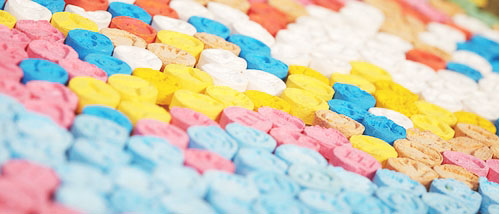
All types of drugs at a glance. Wouldn’t that be cool. It looked like a huge challenge because there are a whole lot of addictive and less addictive substances that make your life both more fun and more difficult. In this article, we take a look at what is available to experience nowadays in the world of smart drugs, psychedelics, pep drugs and party drugs. Welcome to the Drugs List!
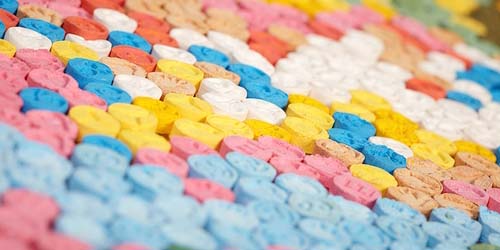
In this article:
- The Addictive Substances Top 15
- What are Drugs?
- What Types of Drugs Exist?
- All Types of Drugs at a glance
- Drugs List (Opium Act)
- Entheogens
Drugs List: The Addictive Substances Top 15
The most addictive drugs are interesting at the beginning. In 2009, a group of experts, including some from the RIVM (the Dutch National Institute for Public Health and the Environment), issued a report in which the best known and most commonly used drugs were ranked in order of dangerousness. From most dangerous to least dangerous:
- Crack
- Heroin
- Tobacco
- Alcohol
- Cocaine
- Methamphetamine (crystal meth)
- Amphetamine
- GHB
- Benzodiazepine (sedatives and sleeping pills)
- Cannabis (weed, hash and concentrates)
- Ketamine
- XTC (MDMA)
- Khat
- LSD
- Shrooms (and magic truffles)
This drugs list was evaluated in terms of the likelihood of addiction, severe toxicity, likelihood of chronic illnesses and social damage to the user and to society. The Jellinek Institute for Drug Addiction and Education suggests that we now know more about the addictiveness of GHB and that it ought probably score higher in the list now than it did in 2009.
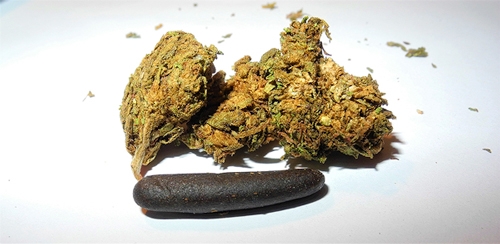
Weed and hash
What are Drugs?
It’s difficult to describe all types of drugs unless you have a definition as to what drugs are. At Dutch Headshop, we think differently about drugs than is the case in most conservative circles. This is our description of what a drug is: all psychoactive substances, found in nature or synthesized by man, that you do not need but which brighten up your life a bit. Our definition therefore includes accepted substances like caffeine, tobacco and alcohol. We mention these three because it’s regarded as completely normal to have a drink at the weekend to blur the edges or drink the daily cup of coffee that wakes us up. Fortunately, tobacco is becoming less and less accepted now that medical science has caught up with the marketing.
What's your own definition of drugs?
What Types of Drugs exist?
To provide an overview of all drugs, it’s convenient or even necessary to put drugs into boxes, in other words to categorize them. You’ve probably heard the terms uppers and downers. An upper peps you up. Whereas a downer lets you relax really well. Caffeine is a typical upper. It increases your concentration, stamina and pulse. Alcohol and weed are typical downers. Just the job for removing inhibitions and triggering relaxation mode.
But what if we told you that there are a lot more categories and that the terms uppers and downers are simply insufficient? For example, which category do you place shrooms in? And what about XTC?
Types of Drugs
If you examine the effects of drugs, you can classify them as follows:
Cannabinoids
Our domain. Dutch Headshop originated from a love of smoking weed and the connectedness associated with it. Cannabinoids like THC, CBD, CBG and THCV are derived from plants (some but not all from cannabis plants). Other cannabinoids such as anandamide and 2-AG also circulate round our bodies and play an important role in daily life. Then there are the synthetic cannabinoids, but it is increasingly being discovered that they are not good for us. Even synthetic THC can be fatal in the end, whereas there are no known cases of overdosing on weed that led to death. Cannabinoids have diverse subjective effects and are therefore not classifiable into the other boxes.
Drugs List of Cannabinoids: THC, CBN, CBD, THCP, CBG, CBDA, THCV, CBC and many others (in weed, hash and concentrates), 2-AG and Anandamide (endocannabinoïden), STS-135, 5F-PB-22, APICA (2NE1), JWH-073 (synthetic cannabinoids).
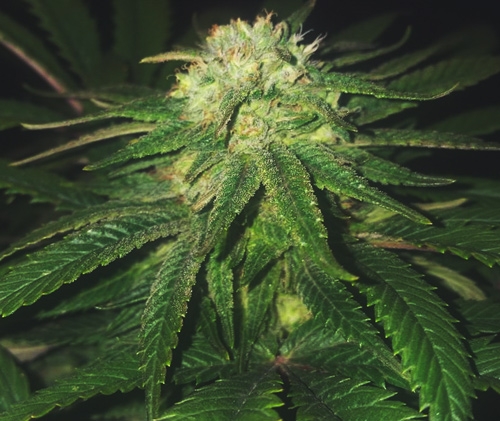
Cannabis plant
Dissociatives
A familiar example is ketamine: originally a synthetic anaesthetic that was supposed to replace another dissociative anaesthetic PCP. Ketamine is also called keta, special K, kitty or horse tranquilizer because it’s used in veterinary medicine to render even the largest of animals unconscious. A dissociative anaesthetic is one of the hallucinogens. It lessens the response to sensory stimuli and makes you feel less connected to your body and environment. Excessive use of ketamine can lead to you ending up in what is referred to as a K-hole. A condition in which you are no longer able to move and even get the feeling that you are almost dead. Not something to be dismissed lightly. The popular party drug N2O - Nitrous Oxide also comes under this heading. It’s not in the same league as ketamine but this dissociative also causes heavy narcosis.
Drugs List of Dissociatives: Ketamine, Phencyclidine (PCP), Methoxetamine (MXE), Dextromethorphan DXM, Ephenidine and Ibogaine.
Psychedelics
We file other hallucinogens under this category. Then we file the classic psychedelics (LSD, shrooms and magic truffles, mescaline cacti and ayahuasca or DMT) under an even more restrictive category. We do this because a lot of research has been undertaken into what these substances do to us. Moreover, we are continually finding out that these relatively non-dangerous drugs also have medicinal properties. We call them classic because they have been known to science for a long time already. On the other hand, there are the psychedelic designer drugs. These are modern drugs, produced in laboratories, which have not (yet) been studied well. Well-known examples on the party scene are 2C-B, DOI, DOM and the highly dangerous 25x-NBOMe family and BromoDragonFLY.
Some psychedelics may cause spiritual effects. How? You can read about that in this blog.
Drugs List of Psychedelics: LSD and LSA (Hawaiian Baby Woodrose & Morning Glory), Shrooms and Magic Truffles (Psilocybin, Psilocin and Baeocystine), San Pedro, Peruvian Torch and Peyote (Mescaline), Ayahuasca and Acacia confusa (DMT), 5-MEO-DMT, Bufotenine, 2C-B, DOx and Efavirenz.
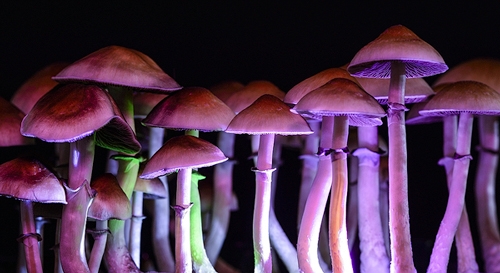
Shrooms
Deliriants
Hallucinogens that cause seriously scary hallucinations. The reason they are so scary is because they allow the dream world to merge seamlessly with the real world. We all know that a dream can suddenly turn into a nightmare. An overdose of alcohol may also cause this phase. This state of consciousness is called delirium, hence the group’s name. Atropine, datura, mirtazapine and the Mandrake wortel (yes, the one from Harry Potter) are not so popular as party drugs because the experience is simply not pleasant. Partly depending on which source you consult, it appears that salvia divinorum may also cause these effects. And we do stock that for you.
Drugs List of Deliriants: Hyoscyamine, Scopolamine, Atropine, Benzydamine, Elemicine, Mirtazapine, Myristicin (yes, that’s right - nutmeg!), Diphenhydramine (DPH), Doxylamine, Salvia divinorum
Depressants
These are the substances that many people call downers. They anaesthetize the body and the mind. Alcohol is by far the best known and most used downer, but other substances that fall under this category include medical benzodiazepines and opiates like morphine and fentanyl. They lower the quantity of neurotransmitters in the brain thus making us feel drowsy, relaxed or tired. Some of these substances raise the pain threshold significantly and others anaesthetize the body so strongly that the heart rhythm and blood pressure drop to dangerously low levels.
Drugs List of Depressants: Diazepam, Tramadol, Kratom, Pentobarbital (truth serum), Alcohol, Heroin, Fentanyl, Opium, Morphine and GHB.
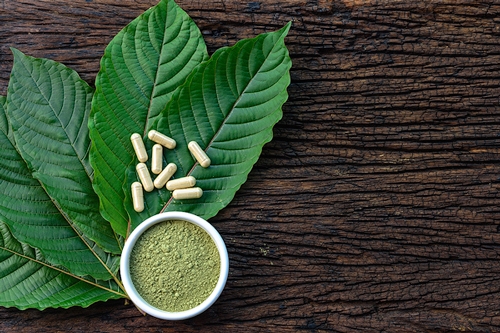
Kratom capsules
Stimulants
As the exact opposite of depressants, we find these uppers. Speed drugs like amphetamine, meth, 4-FA and PMA fall under the amphetamine category. MDMA (XTC) and methylone are a special case because you can also classify them under the entactogens. In addition, you also have methylone, caffeine, cocaine and the dangerous MDPV (bath salts) in this category. Expect effects like reduced appetite, teeth grinding, raised blood pressure, more rapid thought processes, enhanced ego, mega focus and especially really massive pupils!
Drugs List of Stimulants: Cocaine, Crack, Speed (Amphetamine), Crystal Meth (the stuff from Breaking Bad), PMA, MDPV (Bath Salts), Caffeine, 4-FA, Adderall.

Cocaine
Entactogens
Let the love flow. The well-known entactogens like MDA and MDMA (XTC) produce a feeling of togetherness, empathy and love for one’s fellow man. They are special types of drugs that in all cases are also at home in other categories. As well as XTC and methylone, you also find party drugs like 2C-B, 4-FA, GHB, mephedrone and butylone in this category. Note that these drugs thus have other effects and side effects as well.
Drugs List of Entactogens: XTC (MDMA), MDA, metyhylone and 2C-B. 4-FA, GHB, mephedrone and butylone also produce other strong effects.
Nootropics
This class of uppers is more to our taste. Nootropics are smart drugs (drugs you can buy in the smartshop) that give you slightly stronger mental or physical properties. L-Theanine in green tea, for example, has a calming effect. In combination with caffeine, in particular, it proves its value. You get the enhanced focus but without the sleepless nights. That’s why these two often go together hand-in-hand in complete nootropic capsules and concentration pills. 5-HTP is also worthy of some attention. This natural substance can help you to emerge from your Tuesday dip after having partied hard at the weekend, especially after XTC. It raises your serotonin level and thus your enjoyment of life. So don’t take it together with XTC/MDMA. That combination may give rise to a life-threatening illness called serotonin syndrome.
Want to know more about nootropics? Check out this blog!
Antidepressants
Antidepressants are those medications featuring Zs and Xs in their name that you get from the pharmacy on doctor’s prescription. Why are we mentioning Zoloft, Prozac, Paxil and Lexapro here? Because you must not combine them with substances in our online smartshop. These SSRIs lengthen and strengthen the effect of other drugs, smart or otherwise, and may cause you uncontrolled and life-threatening effects. Don’t do it is putting it mildly.
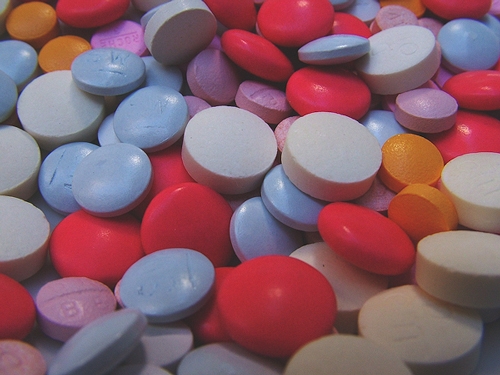
Not party pills but serious medication.
Antipsychotics
The same warning applies to this group. Seroquel, Zyprexa, Risperdal and Haldol are designed to keep delusions and severe psychotic disorders in check. If you are taking one of these substances, then you should not resort to party drugs or psychedelics. That is deadly dangerous.
Neurotransmitters
Finally, there are drugs that are present in all of us. Our brains are an assembly line producing the most diverse psychoactive cocktails you can imagine. That’s why for a lot of people the brain’s cocktail is enough. All respect to you if you don’t need any external drugs, since you know that our brain can produce crazy effects that are comparable to the weirdest of trips. Melatonin makes us tired, GABA raises the pain threshold, serotonin makes us happy and endorphin produces feelings of euphoria. Dopamine is something special, given that this reward substance keeps our addictions intact. Recent research has shown that our bodies also produce DMT: the seriously psychedelic substance in the controversial ayahuasca. What its function is in our bodies is not yet known, but it’s rumoured to play a role in death and the near-death experience.
Special categories are the aphrodisiacs of which the ‘sex plants’ damiana and muira puama are good examples and the oneirogens (dream herbs) The latter-mentioned psychoactive herbs help you to get a handle on your dreams. Cool!
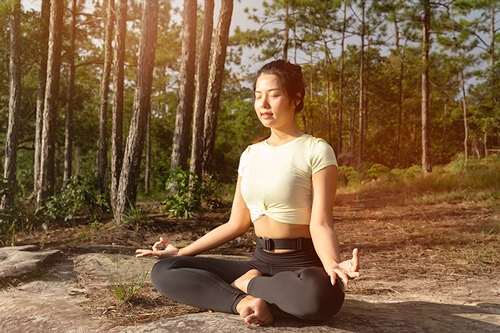
No drugs needed. Our bodies contain a bit of everything!
Drugs List
It goes without saying that legality is a big factor in the classification of drugs. Some drugs are simply more dangerous or more addictive than others. In many countries, the government (often based on thorough research, but certainly not always) determines whether drugs are dangerous or addictive.
All drug types on these lists have been banned either as the result of research or due to certain incidents. Shrooms too are no longer legal due to a number of incidents. However, in some countries we are seeing that drug bans can be reversed. Weed was off limits in the United States but now individual States are amending the law because we have discovered that the war on drugs isn’t actually based on facts but on fear. Currently, extensive research is taking place on all fronts into weed, shrooms, magic truffles, kratom and XTC. For liberally minded persons, this is good news for in a utopian world you should be able to decide for yourself what you put in your body. The fact that these substances are being properly investigated is important, irrespective of the outcome. Because there is a case for saying that the risks involved in certain drugs are unacceptable. What do you think about this?
Entheogens
One special drugs list is that of the entheogens. These are drugs that were used at a point in human history for spiritual, religious or cultural purposes. Some examples of these are Cannabis, salvia, shrooms, kanna, kratom, and morning glory. But honestly speaking, our virtual shop window is full of entheogens. Our preference is to accommodate them all provided they are legal, safe and non-addictive.
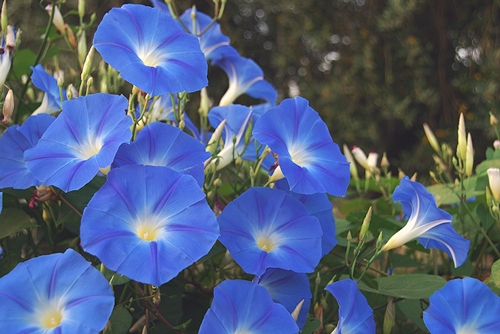
Morning Glory
Our aim is to provide you with a safe, responsible and enjoyable time with soft drugs that do exactly what you want. And how do you find out whether a drug does what you want? Our extensive product descriptions, blogs and award-winning customer service are at your disposal. We believe it’s important to inform you as comprehensively as possible about the do’s and don’ts, so that you can confidently enjoy the substances that nature creates for you.
Would you like to know more about the smart drugs we offer? Make a start with the following inspiring blogs:
- Kanna Drugs: from Effects to Experiences
- Salvia Divinorum - Your Questions about tripping on Salvia Answered
- Mescaline Cacti - How do you use Peyote and San Pedro?
- Everything you need to know about Ayahuasca and DMT Drugs in Europe
- Dream test: The Best Dream herbs for Lucid Dreaming